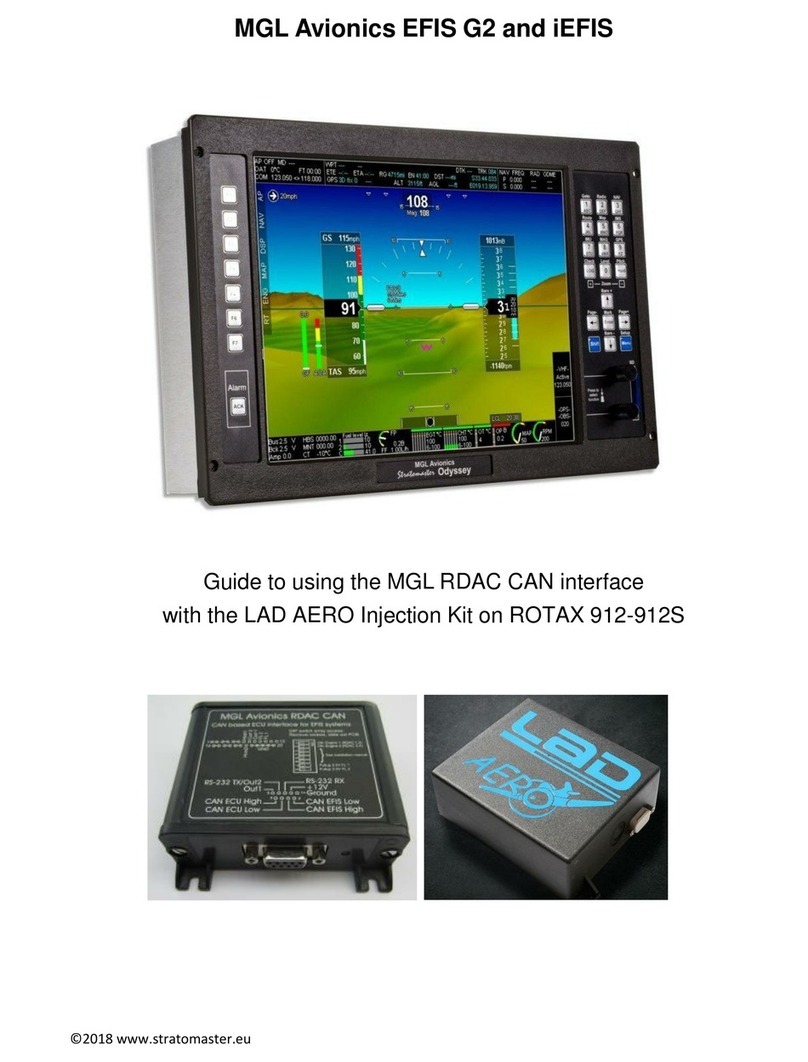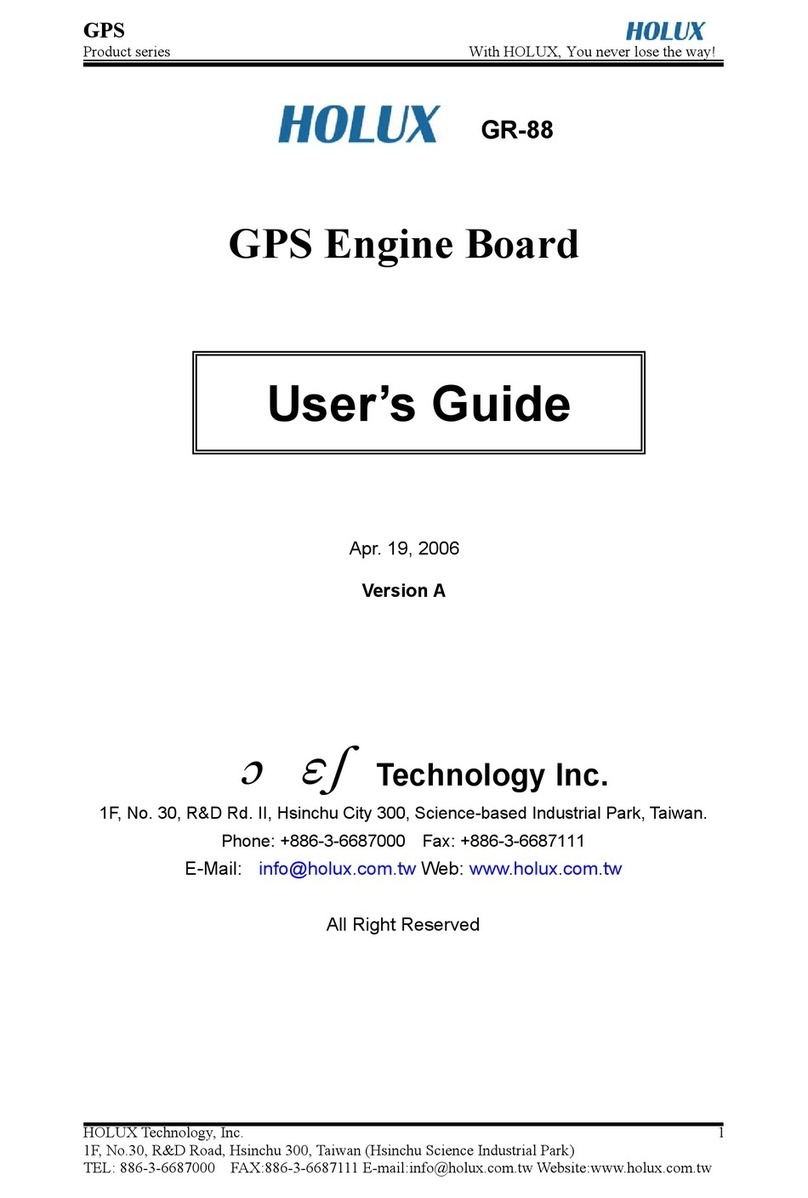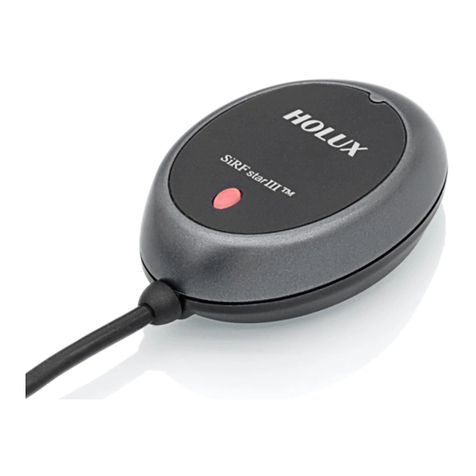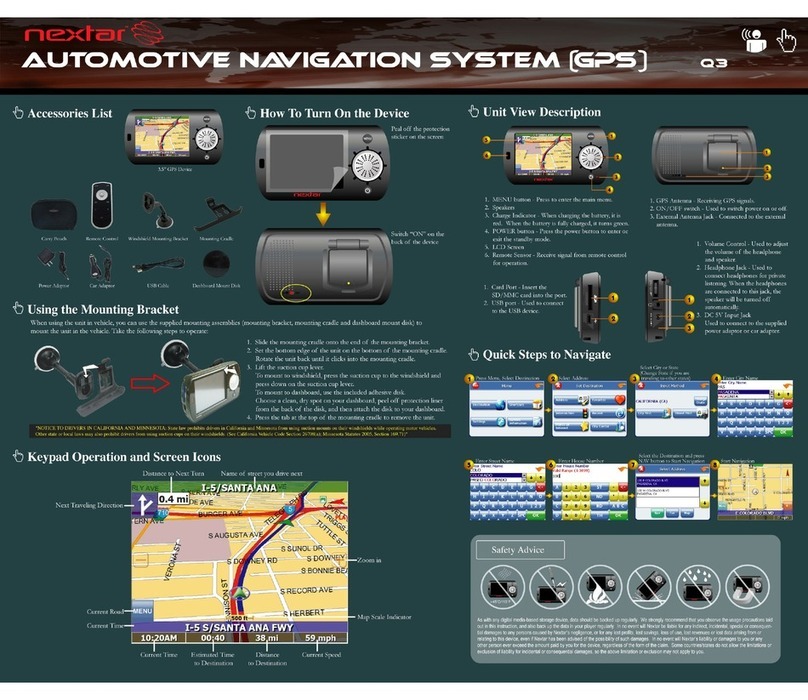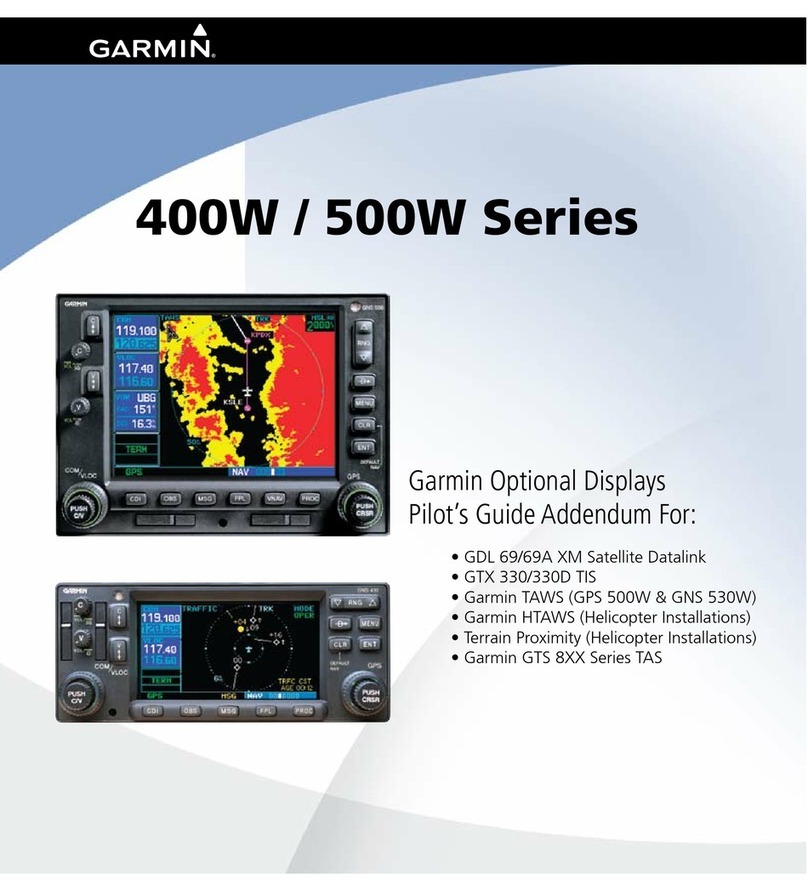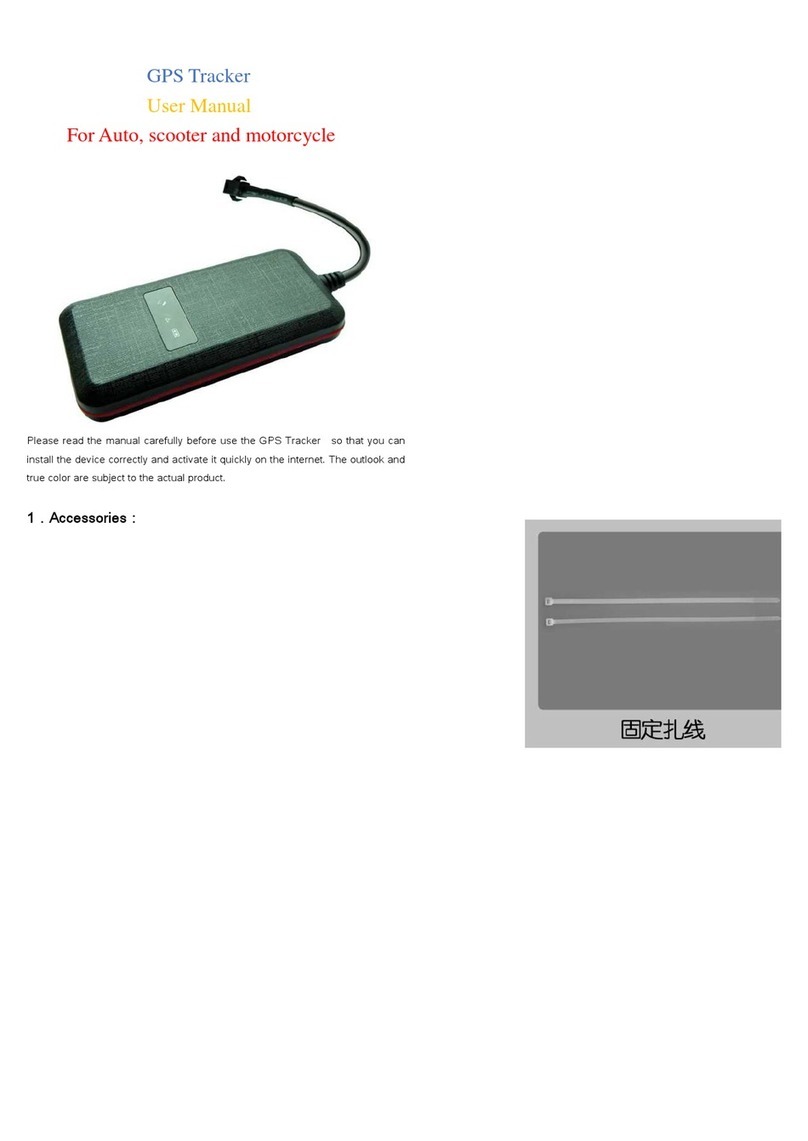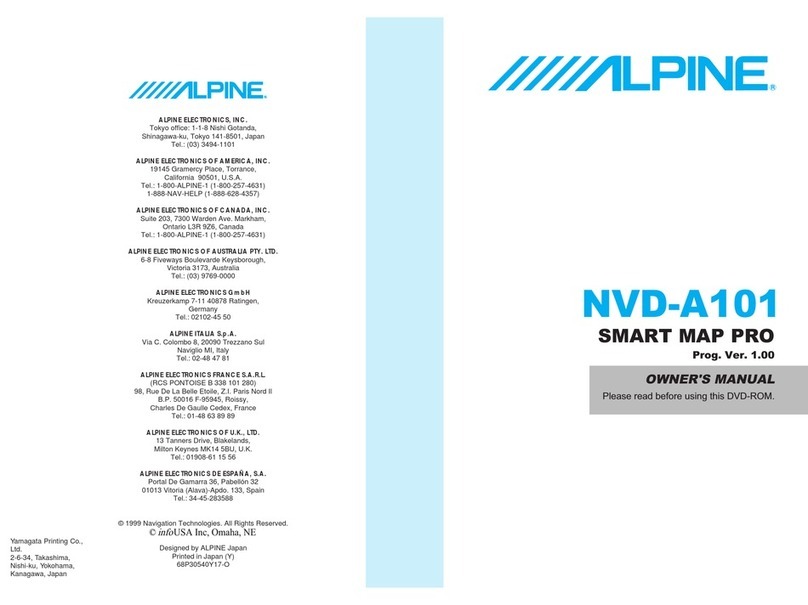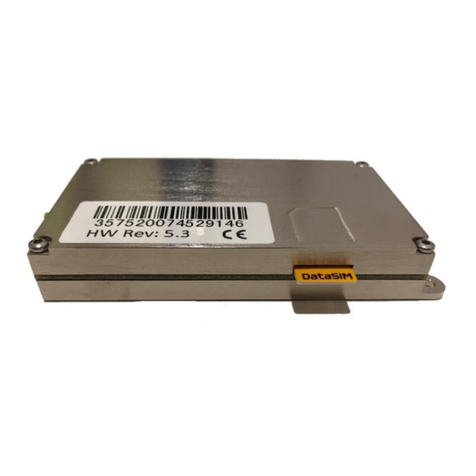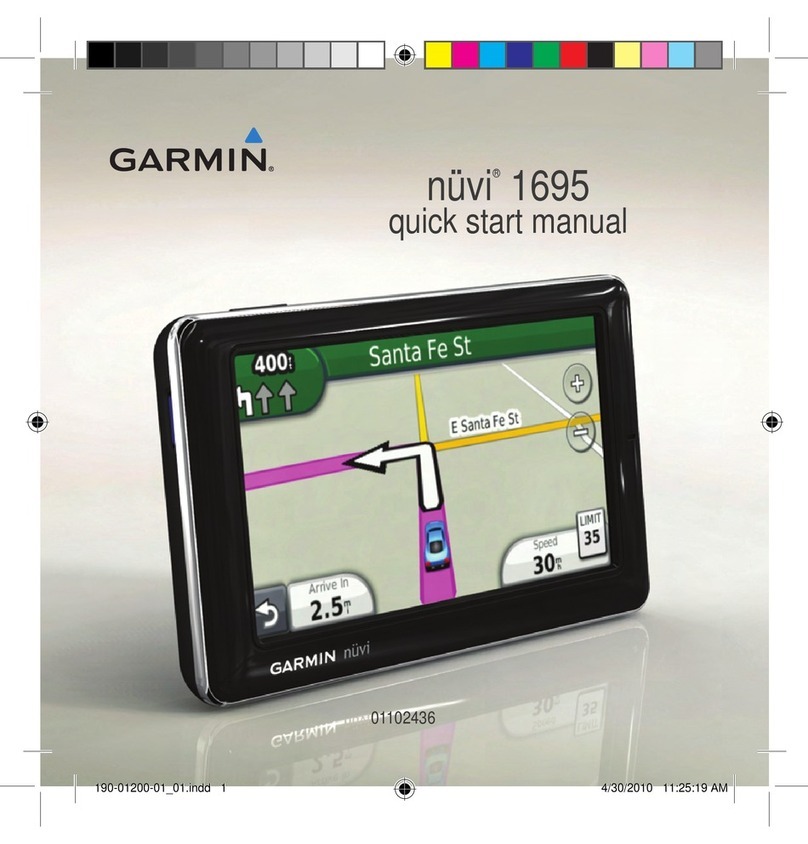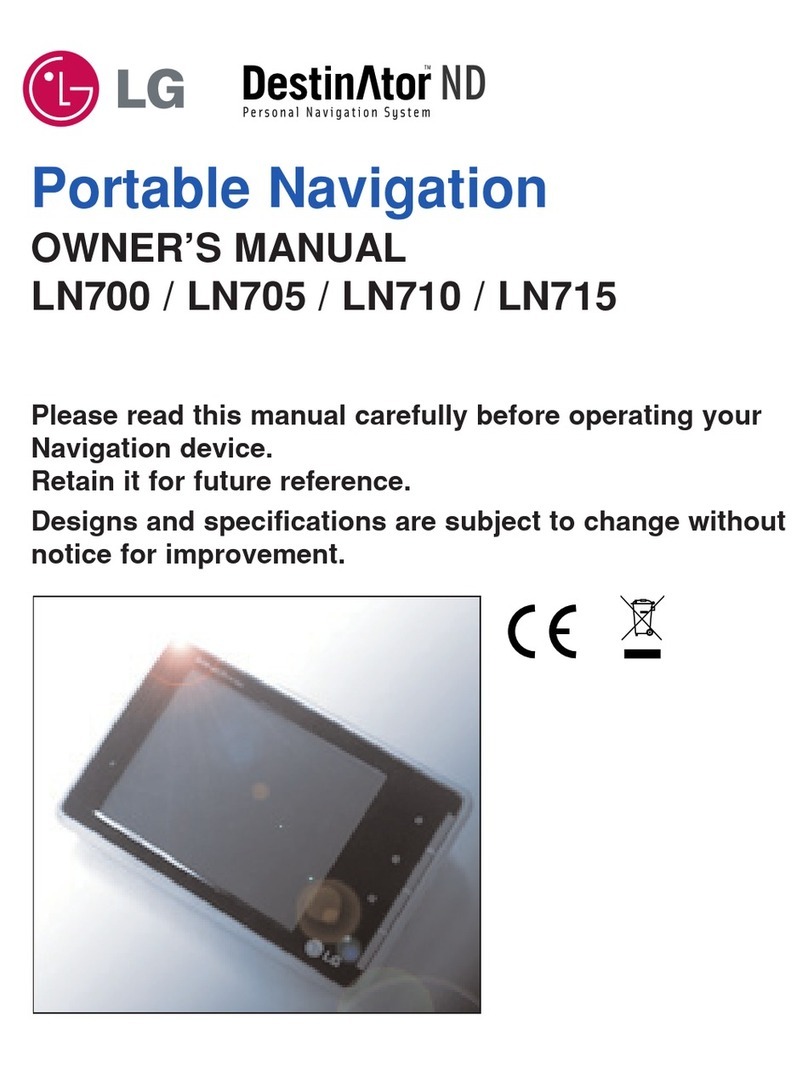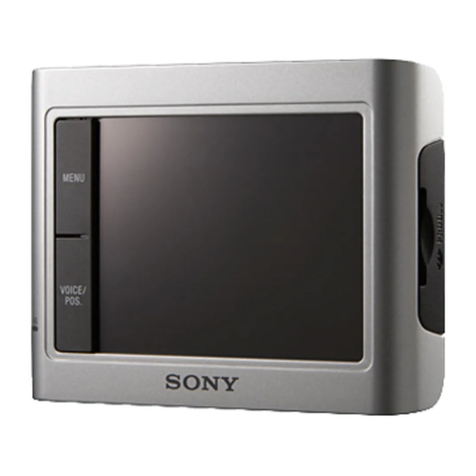MGL Avionics ASX-1 User manual

Introduction
The ASX-1 altimeter/airspeed combo is a 2 1/4” instrument based on a precision altimeter and a wide range, sensitive
airspeed indicator The altimeter conforms to ANSI standard atmosphere rules from –700 ft up to a maximum of 30 000 ft
The altimeter includes an encoding serial output that, when used in combination with MGL Avionics CNV-AT, provides a
parallel Gillham code interface for transponders The altimeter can display altitude in feet or meters Local pressure can
be set in millibars or inches of Mercury
The airspeed indicator can show air speeds from 16 to 250 mph and is well suited for use in slow aircraft due to very good
sensitivity and linearity at low air speeds The airspeed indicator as well as altimeter can interface to a static port and the
airspeed indicator is based on a standard aviation pitot tube The airspeed indicator can be set to indicate speeds in
statute miles per hour (mph), kilometers per hour (km/h) or nautical miles per hour (knots) with the air-distance being
displayed in corresponding units The airspeed sensitivity can be calibrated by the user to cater for errors caused by pitot
tube placement The ASX-1 also outputs airspeed information via the airtalk protocol for interfacing to the Infinity FF-1 /
Velocity FF-3 (fuel flow computer for single or dual fuel tanks) and the SP-X (AHRS) instruments
In addition the ASX-1 provides a 24 entry automatic flight log that stores the duration of each of the last 24 flights, an air-
distance trip counter and a current flight timer The ASX-1 is the ideal instrument for installations where panel space is
limited
1 Features
• Precision altimeter from –700 ft up to a maximum of 30 000 ft (-213m to 9144m
• Provides a parallel Gillham code interface for transponders when used in combination with the MGL
Avionics CNV-AT
• The altimeter can display altitude in feet or meters. Local pressure can be set in millibars or inches of
Mercury
• Airspeed ranges from 16 to 250mph and is well suited to slow aircraft due to very good sensitivity and
linearity at low air speeds. Airspeed can be displayed as IAS or a calculation based TAS
• Includes a 24 entry automatic flight log
• Includes an air-distance trip counter and a flight timer
• Airspeed units can be in miles per hour (mph , kilometer per hour (km/h or nautical miles per hour (knots
• Contains a programmable low/high airspeed alarm
• Records maximum airspeed and altitude reached in permanent memory
• Standard 2 1/4” aircraft enclosure (can be front or rear mounted
• Rotary control plus 2 independent buttons for easy menu navigation and user input
• Alarm output as well as a red LED illuminates when the alarm has been activated
• Large backlit graphic LCD with adjustable contrast
• Wide input supply voltage range of 8 to 30V DC with built in voltage reversal and over voltage protection
for harsh electrical environments
• Light weight design
• Field upgradeable firmware
• 1 year limited warranty
ASX-1
Encoding aviation altimeter with
serial output and airspeed Indicator
(ASI
Operating Manual – English 1.05

ASX-1 Operating Manual Page 2
2 ASX-1 Layout
3 Main Display
Backlit Graphic LCD Display:
Contrast and backlight can be adjusted
in the menu system
Harness:
Harness connects to
power
Up/F1 Button:
Up button in menu system
Start/Stop flight in normal
mode
Down/F2 Button:
Down button in menu
system
Flight time and air
distance display in
normal mode
Rotary Control (up/down & Enter Button:
Press the rotary control during normal mode to access the menu system Rotate anti/clockwise
for up/down menu scrolling During normal mode rotating the rotary control will adjust the local
pressure setting Local pressure can be set in either mB or in “Hg
Pressure Ports:
Pressure ports connect
to static and pitot tubes
LED Alarm:
The red LED will illuminate if the
airspeed alarm set points has been
exceeded
Airspeed units
Altitude units
Digital airspeed display
Digital altimeter
IAS: Indicated airspeed
TAS: True airspeed
Local pressure readout (either in
millibar or in inches of Mercury)

ASX-1 Operating Manual Page 3
3.1 Start/Stop Flight display
Press the F1 key during the normal display mode to manually start/stop a flight This key is only active if the ASX-1 is
setup to select the manual flight option under the log book setup menu
3.2 Flight time and air distance display
This display can be accessed by pressing the F2 key during the normal display mode Use the up/down keys or the rotary
control to select “reset air dist” to reset the air distance counter The flight time is automatically reset when a new flight is
started The air distance trip counter can still be reset manually even if the pilot selects the automatic resetting of the air
distance trip counter
4 Menu System
Pressing the rotary control button during the normal display mode will cause the ASX-1 to enter the menu system Use
the up/ down keys or the rotary control to navigate through the menu system
Note: The air distance trip counter measures distance flown through the air This is not the same as
distance flown over the ground unless you are flying at sea level at zero wind speed The air
distance shown is subject to under reading at altitude due to decreased air density

ASX-1 Operating Manual Page 4
4.1 Exit Menu
Pressing the rotary control on this menu item will cause the ASX-1 to exit the menu system All
changes made during navigation of menu system will be saved in non-volatile memory on exiting the
menu system If you remove power before exiting the menu the instrument will not save any
changes
4.2 Maximum Values
To avoid false recordings, the maximum values function is only activated 10 seconds after the
instrument has powered up
Move the highlight over the “DONE” menu item and press the rotary button to return to the main
menu
Move the highlight over this menu item and press the rotary button to reset the maximum altitude
and airspeed values to the current values
4.3 Flight Log
The ASX-1 uses the following algorithm to determine if a flight is in progress (Detect Mode):
If airspeed is greater than the preset flight take off airspeed for the duration of 60 seconds or more,
a flight is started with a logbook entry The flight ends if airspeed falls below the preset flight take off
airspeed for 30 continuous seconds During a flight the logbook cannot be viewed
The above algorithm ensures that touch-and-goes will not result in the end of a flight and a logbook
entry Should the instrument be switched off during a flight, this will end the flight and the log will reflect the time until the
instrument was switched off Should the instrument be switched on again during a flight, a new flight will start for logging
purposes
Move the highlight over this menu item and press the rotary button to return to the main menu
Note: (ADC Values and Calibrate Menus are only visible when powering up the unit and pressing the
Rotary Control) The text “CALIBRATE” will appear on the intro screen when entering this mode
Warning: The Calibrate Menu is for technical personnel only Changing any values in this menu may
cause the instrument to display incorrect information, and may require the instrument to be returned to
the factory for recalibration

ASX-1 Operating Manual Page 5
Select this function to view the flight log The flight log contains the duration of
each of the last 24 logged flights Duration is displayed in hours and minutes
Eight flights are displayed at a time, Use the up/down or the rotary control to
navigate through the log Empty log entries are shown as “--:--“
Note: You cannot view the flight log while a flight is in progress
Pressing the F1 key will erase all the flight log entries
Select if you would like the hour to be displayed in decimal fractions (0-99) or minutes (0-59)
This setting influences the current flight time display and the flight log
Select whether you want the ASX-1 to automatically detect a flight or whether the pilot must press
the F1 key to start/stop a flight
This menu item is only shown if the “detect” flight mode is selected Enter the airspeed that you want
a flight log entry to start
4.4 Display Setup
Move the highlight over the “DONE” menu item and press the rotary button to return to the main
menu
Select this menu option to adjust the display contrast
Select this menu option to turn the backlight on and off

ASX-1 Operating Manual Page 6
4.5 Altitude Setup
Move the highlight over this menu item and press the rotary button to return to the main menu
Select if you want your altitude readout in feet (ft) or meters (m)
Select if you want your local pressure readout in millibars (mB) or inches of Mercury (“Hg)
Select whether you want the altitude display on the top or on the bottom of the main display
4.6 Airspeed Setup
All the airspeed parameters can be setup here
Move the highlight over the “DONE” menu item and press the rotary button to return to the main
menu
This setup allows your instrument to measure the zero airspeed reading of the
airspeed sensor and set a calibration value internally for this This is equivalent
to some mechanical airspeed indicators that have an adjustment to set the
needle to zero when the aircraft is not moving You would use this function
occasionally if you see an airspeed reading when the aircraft is at rest This
may be caused by aging of the built in pressure sensor or related electronics When you perform this function, make sure
that no wind is blowing into the pitot tube as this would result in an incorrect internal calibration
Pressing the F1 key will zero the airspeed sensor
Enter whether you want the airspeed to display true airspeed (TAS) or indicated airspeed (IAS)
Please see section 6 below for more information on true airspeed (TAS)

ASX-1 Operating Manual Page 7
Enter the low airspeed set-point for when the alarm must activate Any speed below this value will
activate the alarm
Select whether you want the low air speed alarm to be turned on or off The low airspeed alarm is
only activated once a flight has started
Enter the high airspeed set-point for when the alarm must activate Any speed above this value will
activate the alarm
Select whether you want the high air speed alarm to be turned on or off
Select the ASI unit of preference You can select statute miles, kilometers or nautical miles
According to this selection your airspeed will be indicated in mph, km/h or knots
This function can be used to select the signal filter time constant Selections are “fast” or “slow” This
selection influences the rate at which your ASI can change its reading If you have an installation
that suffers from strong turbulence at the pitot tube, select “slow” If you have a very clean airflow in
front of the pilot tube you can select “fast” which will give you a faster response to airspeed
changes
Select if you want the air-distance counter to reset automatically at the start of a flight or if you want
to reset it manually only
Note: You can reset the air distance counter at any time regardless of this setting
Select whether you want the airspeed display on the top or on the bottom of the main display
4.7 ADC Values
Note: This menu item is for technical personnel only, and is not displayed during the normal
operation of the instrument Please see section 4 above on how to access this menu item
This menu displays the ADC values that have been read from the pressure sensors
4.8 Calibrate
Note: This menu item is for technical personnel only, and is not displayed during the normal
operation of the instrument Please see section 4 above on how to access this menu item Consult
your local dealer or factory before entering this menu

ASX-1 Operating Manual Page 8
Move the highlight over this menu item and press the rotary button to return to the main menu
On the back of the ASX-1 you will find the calibration number that has been determined to result in
the most accurate reading of your altimeter This is the value that should be entered here Should
you have access to an accurate reference you may use this function to calibrate your altimeter
Before you do this, ensure that you have your local pressure set to coincide with a calibrated and
certified reference Your altimeter has been calibrated by the factory to an accuracy of +/- one mB
or approximately +/- 30 ft (10m)
This function is used to calibrate your airspeed indicator During the factory calibration a factor has
been determined and entered here that will give you accurate airspeed provided your pitot tube is
not influenced by pressure effects caused by airflow around your airframe The calibration works in
% of the reading and you can increase or decrease the reading if required to help cancel out under
or over reading of the airspeed indicator on your aircraft The original calibration factor has been
written onto the back of your instrument
5 Altitude Encoder
To use the ASX-1 as an encoding altimeter an Airtalk to parallel Gillham code output encoder such as the MGL Avionics
CNV-AT must be used This converter takes the Airtalk serial string that is outputted by the ASX-1 and converts it to a
parallel Gillham code suitable for aircraft transponders Please see the CNV-AT operating manual for more information
6 True airspeed (TAS
TAS is indicated airspeed corrected for air density As air density decreases with altitude, an airspeed indicator will under read
at altitude This error can be appreciable, for example at an altitude of 5 000 ft (1 524 m) errors of 5% to 10% are possible
depending on local weather and temperature conditions As you increase the altitude the error gets larger quickly Setting your
instrument to read TAS will correct for this error based on the pressure altitude reading, taking your current QNH setting into
account The result of this is an airspeed reading that can be as accurate as 1%, depending mainly on the errors introduced by
the airflow around your aircraft and pitot tube
How is TAS calculated? Often pilots ignore the effect of temperature and only take altitude into account when converting
ASI to TAS For practical purposes this is quite accurate and gives a good reflection on your true airspeed Keeping in
mind that ASI measurement is subject to errors caused by airflow around your aircraft, there seems little point in taking
this calculation to absolute resolution Again, we have decided to use a formulae often used by pilots This way the
instrument reading will agree with what pilots are used to
Based on Worthington’s 13th edition page 349:
Add 1 75% of indicated airspeed (IAS) per 1000 ft (304 9 m) increase in altitude above sea level
We assume here that IAS = RAS (rectified air speed)
Warning when using TAS: You aircraft’s stall, rotation and approach speeds are based on sea-level ASI
indication Should you use TAS indication at altitude you must correct for the reduced ambient pressure effects
on the control and flight surfaces of your aircraft Should you fail to do so you will endanger your flight by flying
to slowly for prevailing conditions Always use the ASI indication to determine your rotation or approach
speeds

ASX-1 Operating Manual Page 9
7 Loading factory default settings
Pressing and holding the F1 and F2 simultaneously on power up will cause the ASX-1 to load preprogrammed factory
default settings The following screen will be displayed:
8 Operating the alarms
If the alarm is activated, the corresponding item on the display will flash At the same time the externally available alarm
switch will close The switch will remain closed until any button is pressed to acknowledge the alarm or until the
condition(s) that activated the alarm no longer exist The alarm output can be used to switch an external alarm indicator
The external alarm switch is an open collector transistor switch to ground with a maximum rating of 0 5A DC It is possible
to wire the alarm contacts of several Stratomaster instruments in parallel should this be desired To avoid false activation
of the alarms, the alarm function is only active 10 seconds after the instrument has powered up
9 Cleaning
The unit should not be cleaned with any abrasive substances The screen is very sensitive to certain cleaning materials
and should only be cleaned using a clean, damp cloth
10 ASX-1 Specifications
Operating Temperature Range -10ºC to 50ºC (14ºF to 122ºF)
Storage Temperature Range -20ºC to 80ºC (-4ºF to 176ºF)
Humidity <85% non-condensing
Power Supply 8 to 30Vdc SMPS (switch mode power supply) with built in 33V over voltage
and reverse voltage protection
Current Consumption Approx 50mA @ 13 8V (backlight on) 16mA @13 8V (backlight off)
Display 114x64 graphic LCD display Contrast and backlight is user configurable,
green/yellow backlight
ADC 12bit over sampled successive approximation
Dimensions see Infinity series dimensional drawing
Enclosure 2 1/4” ABS, black in color, front or rear mounting
Weight Approx 120 grams
Alarm contact current rating Open collector transistor switch to ground Maximum rating 0 5A DC
Non-volatile memory storage 100000 write cycles
Altimeter range -700ft to 30 000ft (-213m to 9144m)
Altimeter resolution 1ft/1m
Measurement accuracy +/- 1mB, +/- 30ft at sea level
Airspeed range 16mph to 250mph
Airspeed resolution 1 mph
Measurement accuracy +/-1% at 85mph nominal
Airtalk protocol 19200 baud, 8 data bits, no parity, 1 stop bit (TTL voltage levels)
Warning: The ASX-1 is not waterproof, serious damage could occur if the unit is exposed to
water and/or spray jets

ASX-1 Operating Manual Page 10
11 Installation
Connect the static port to a suitable static air pressure line If you have a slow aircraft or an aircraft were the internal cabin
pressure does not change during flight and is equivalent to the outside air pressure you may find that it is not required to
connect a static port For installations in typical ultralight aircraft pods, be aware of possible pressure changes inside the
pod during flight caused by ram air or suction effects This may lead to a false indication of altitude and/or airspeed Often
these effects are dependent on the current angle of attack of the airflow around your pod You will need to install a
suitable static port in these cases Connect your pitot tube to the “pressure port” Pitot tubes are found in a large variety at
your aircraft parts shop, in mail order catalogs or you can make your own Contrary to popular belief, pitot tubes are not
carefully designed and calibrated, but are simple orifices or tubes that get pointed in the direction that you are flying The
forward movement of the aircraft causes air to dam inside the pitot tube This increases the pressure inside the tube Most
small aircraft such as ultralights or microlights do not require a connection to a static port In these cases, simply leave the
static port open Ensure however that the static port does not receive pressurized air due to the forward movement of the
aircraft Be especially critical of your pod or panel if you do not use a static port Any build up of a pressure differential due
to ram air or suction can lead to large errors of the indicated airspeed Static ports are usually mounted at a strategic
position on the rear side of the aircraft fuselage for faster, pressurized aircraft Suitable pitot tubes can be made from a
short piece of hollow aluminium or copper piping Length and diameter are not important Ensure that the front of the pitot
tube has a suitable chamfer if you use thick walled tubing or you may introduce a speed reading error if you have a faster
aircraft
Example cross-section of thick walled pitot tube.
Suitable connection hose for both pitot tube and static port can be obtained from a hardware store or even a pet shop
Good quality tubing is often used for fish tanks and it has just the right diameter Please note that this kind of tubing is not
advised for pressurized aircraft In this case you would need to obtain aircraft grade tubing of suitable diameter You
would also have to use hose clamps to fasten the hose onto the ASX-1 pitot and static ports The ASX-1 allows you to
calibrate the airspeed reading This is done in the “Calibrate” menu item The main reason for this is to be able to remove
errors introduced due to the airflow around your aircraft which may have an effect of your pitot tube pressure
11.1 ASX-1 DB9 Cable connections
DB 9 Pin Color Function
1 Black Ground
4 RCA
(Inner
cable
Airtalk communication
Used for firmware upgrading and
interfacing to the FF-1/SP-X (Airtalk speed
message or the CNV-AT (Airtalk to
parallel Gillham code output encoder
6 Red 8-30Vdc power
9 White Alarm Output

ASX-1 Operating Manual Page 11
11.2 Connection Diagram
Connect static port to suitable static line on the aircraft Note: Leaving this port unconnected may lead to airspeed and
altitude errors as cabin pressure changes due to airflow or other factors Connect the pressure port to a pitot tube The
location of the pitot tube should be chosen so it is exposed to clean, undisturbed airflow at the same speed as the aircraft
if flying Small errors related to location may be calibrated out using the ASI calibration function
The use of an external 1A fuse is recommended Connect the supply terminals to your aircrafts power supply The ASI-1
can be used on both 12V and 24V without the use of any pre-regulators Ensure that the supply voltage will not drop
below 8V during operation as this may result in incorrect voltage and or current readings
11.3 Pressure Port Dimensions
Inches Millimeters
Min Max Min Max
A0.248 0.278 6.30 7.06
B0.420 0.440 10.67 11.18
C0.182 0.194 4.62 4.93
D0.310 0.330 7.87 8.38

ASX-1 Operating Manual Page 12
12 Warranty
This product carries a warranty for a period of one year from date of purchase against faulty workmanship or defective
materials, provided there is no evidence that the unit has been mishandled or misused Warranty is limited to the
replacement of faulty components and includes the cost of labour Shipping costs are for the account of the purchaser
Damage as a result of applying excessive pressure to the pressure ports are excluded from warranty.
13 Disclaimer
Operation of this instrument is the sole responsibility of the purchaser of the unit The user must make themselves familiar
with the operation of this instrument and the effect of any possible failure or malfunction
This instrument is not certified by the FAA Fitting of this instrument to certified aircraft is subject to the rules and
conditions pertaining to such in your country Please check with your local aviation authorities if in doubt This instrument
is intended for ultralight, microlight, homebuilt and experimental aircraft Operation of this instrument is the sole
responsibility of the pilot in command (PIC) of the aircraft This person must be proficient and carry a valid and relevant
pilot’s license This person has to make themselves familiar with the operation of this instrument and the effect of any
possible failure or malfunction Under no circumstances does the manufacturer condone usage of this instrument for IFR
flights
Other instruments in the Stratomaster Infinity series
ALT-1 Precision encoding altimeter and vertical speed indicator
ALT-2 Precision encoding altimeter and vertical speed indicator with a serial RS232
transponder output
ASI-1 Airspeed indicator (ASI) with automatic flight log
ASX-1 Encoding aviation altimeter with serial output and airspeed indicator (ASI)
AV-1 Artificial horizon and magnetic compass indicator
BAT-1 Battery voltage and current monitor
E-3 Universal engine monitor
FF-1 Fuel Computer (single or dual fuel tanks)
GF-1 +-10G tilt compensated dual range G-force meter
MAP-1 Manifold pressure and RPM Indicator
RV-1 Universal engine RPM and rotor RPM Indicator
RV-2 Universal turbine RPM / RPM factor display
RTC-2 Aviation real time clock (RTC) and outside air temperature (OAT) display
TC-1 4-Channel thermocouple indicator
TP-1 Universal temperature and pressure gauge
Note: Product warranty excludes damages caused by unprotected, unsuitable or incorrectly wired
electrical supplies and or sensors, and damage caused by inductive loads
The manufacturer reserves the right to alter any specification without notice
Table of contents
Other MGL Avionics GPS manuals
